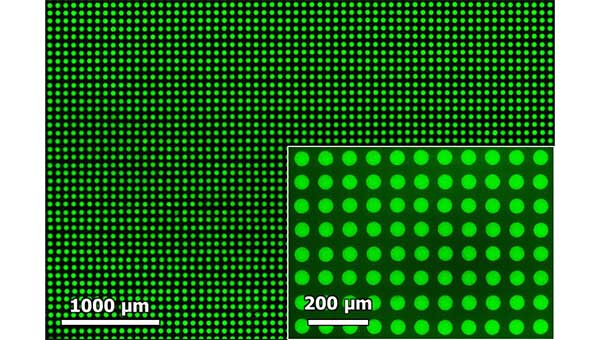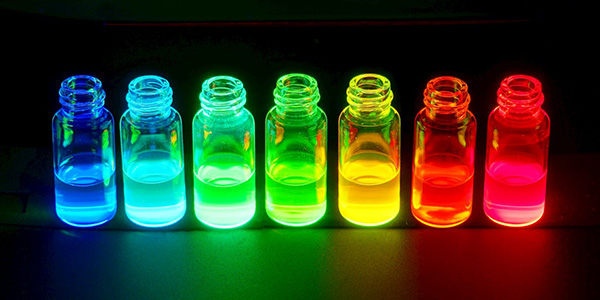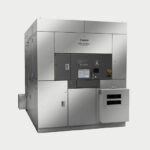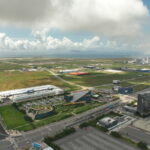ASIA ELECTRONICS INDUSTRYYOUR WINDOW TO SMART MANUFACTURING
Canon Develops Perovskite QD Inks for Next-Gen Displays
Canon Inc. has developed a quantum-dot ink with a perovskite structure as a material for next-generation quantum-dot displays. The company has successfully demonstrated its practical durability1 for the first time2.
Generally, the performance and image quality of display devices continue to rapidly improve. Towards this end, one such approach that is gaining momentum is applying quantum-dot technologies (QD) to meet the need for displays with higher image quality.

Quantum Dots as Display Material
Quantum dots are semiconductor nanocrystals that measure only a few nanometers in diameter. They emit light with high brightness and high color purity. Specifically, displays with quantum-dot technology are attracting growing attention due to their wide color gamut that makes possible high visual expressiveness. Therefore, QDs for display are sought to achieve higher color purity and higher light utilization efficiency. In addition, though cadmium (Cd) has thus far been the preferred material for quantum dots, due to environmental concerns, interest in Cd-free materials is growing.
With these requirements in mind, Canon has focused on the development of perovskite quantum-dot inks. Perovskite quantum dots are considered an effective Cd-free approach other than indium phosphide (InP) quantum dots. In terms of color purity and light efficiency, many see perovskite quantum dots as a promising material capable of contributing to high brightness, a wide color gamut, and high resolution. However, poor durability has thus far been a barrier to practical use.
To address the issue of durability, Canon is leveraging its proprietary technologies nurtured through development of ink and toner for printers. Specifically, the company has established a unique method to form a protective shell on quantum dots. Thereby, it achieved practically durable perovskite-dot ink with retained color purity and light usage efficiency.
InP quantum-dot ink covers 88% of the color gamut based on the ITU-R BT. 2020 recommendation3, while Canon’s perovskite quantum-dot inks can cover 94%4 of the gamut. In addition, the high efficiency of light use is expected to reduce power consumption of quantum dots by approximately 20%5 compared to conventional technology.
Canon’s quantum-dot inks have the potential to help realize next-generation OLED displays with ultra-high definition. Among them include quantum-dot 8K displays, a technology that has been unachievable as of today.
1T90=10,000 hours. The time until the brightness reaches 90% of the initial value at 1,000nit (a unit indicating the degree of brightness), which is equivalent to the blue light brightness under actual use.
2As of May 28, 2023. Based on Canon research
3Recommendation formulated by ITU (International Telecommunication Union) to provide video signals for UHDTV broadcasting systems
4Estimation when a display is constructed by combining a red/green ink-cured film with an appropriate blue light source
5Estimation when used in current OLED TVs utilizing quantum dots
Canon’s perovskite quantum-dot inks
Quantum-dot ink with indium phosphide cover 88% of the color gamut based on the ITU-R BT. 2020 recommendation. Meanwhile, Canon’s perovskite quantum-dot inks can cover 94% of the gamut.
Canon’s quantum-dot inks have the potential to help realize next-generation OLED displays with ultra-high definition, such as quantum-dot 8K displays, a technology that thus far has been unachievable. The high conversion efficiency of light that emanle smaller pixels makes this possible.



High-resolution print samples of the perovskite quantum-dot inks
OLED displays using quantum dots
Quantum dots convert the blue light of the light source into red and green. Compared with white light sources, quantum-dot technology makes possible red and green light with higher color purity, thus enabling displays with a wider color gamut.
Perovskite quantum dots
The wavelength (color) of emitted light can be controlled by compositions and particle sizes of perovskite quantum dots.

What is a Perovskite Structure?
A perovskite structure is one type of crystalline structure. By changing the elements that compose a perovskite structure, a variety of properties can be manifested. Among them include superconductivity, ferroelectricity, fluorescence, and photoelectric conversion. Due to this versatility, a perovskite structure holds great potential for use as a functional material. In recent years, perovskite solar cells have attracted attention thanks to their low cost and versatility which enables them to be used anywhere.




